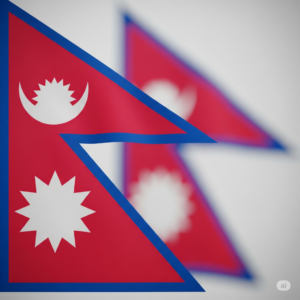Fun facts about flags and their meanings
Discover some interesting facts about flags and their meanings
Flags are more than just pieces of colored fabric; they are powerful symbols, telling stories of history, identity, and aspirations. Every stripe, every star, every color, and every emblem on a flag is usually there for a reason, carrying a deep meaning that often goes unnoticed by the casual observer. From ancient battle standards to modern national emblems, flags have united people, declared independence, and represented a nation’s soul. Let’s unfurl some curious facts and unravel the hidden significances behind these iconic symbols!
The Oldest and the Youngest: Timeless Symbols

Some flags have endured for centuries, while others are relatively new creations, reflecting evolving nations and identities.
- The Danish “Dannebrog”: Often cited as the oldest continuous national flag in the world, Denmark’s flag, the Dannebrog, dates back to 1219. Legend says it fell from the sky during a battle, bringing victory.
- The Stars and Stripes (USA): While its design has evolved with the addition of stars, the fundamental concept of the American flag dates back to 1777. The 50 stars represent the states, and the 13 stripes represent the original colonies.
- Newer Nations, New Flags: Many flags of newly independent nations tell very recent stories. For instance, the flag of South Sudan, adopted in 2011, features colors with specific meanings: black for its people, white for peace, red for the blood shed for freedom, green for agriculture, and blue for the Nile River.
Colors Speak Volumes: The Language of Vexillology
The choice of colors on a flag is rarely arbitrary; they often carry profound symbolism. This study of flags is called vexillology.
- Red: Commonly represents bravery, sacrifice, blood shed for freedom, or revolutionary spirit. Think of the flags of China, Vietnam, or Turkey.
- White: Often symbolizes peace, purity, honesty, or innocence. Examples include the flags of Finland or Argentina.
- Blue: Frequently stands for peace, truth, justice, patriotism, the sky, or the sea. The flags of Greece, Somalia, and the United Nations feature prominent blue.
- Green: Can represent nature, land, hope, Islam, or prosperity. Many flags of African and Islamic nations use green, such as Nigeria or Saudi Arabia.
- Yellow/Gold: Often signifies wealth, prosperity, sunshine, enlightenment, or natural resources. Found on flags like those of Brazil or Spain.
- Black: Can represent determination, ethnic heritage, or overcoming adversity. The flag of Kenya uses black to symbolize its people.
Unique Shapes and Designs: Breaking the Rectangular Mold
While most flags are rectangular, some stand out with unusual shapes or intricate designs.
- Nepal’s Non-Rectangular Flag: The only national flag that is not rectangular. It consists of two overlapping triangular shapes, representing the Himalayan mountains and the two major religions, Hinduism and Buddhism.

- Switzerland’s Square Flag: Along with the Vatican City, Switzerland has a square national flag, featuring a white cross on a red field.

- Ohio’s Burgee Flag: The U.S. state of Ohio has the only non-rectangular state flag, shaped like a swallowtail pennant, known as a burgee.

- Mozambique’s AK-47: One of the most unique symbols on a national flag, Mozambique’s flag features an AK-47 rifle, symbolizing defense and vigilance.

Symbols and Emblems: Decoding the Imagery
Beyond colors, the symbols, emblems, and devices on flags add layers of meaning.
- Stars: Can represent states (USA), unity (EU), hope, or heaven.
- Crescents and Stars: A common symbol in flags of Islamic countries, representing Islam itself or growth and enlightenment.
- Animals: Animals often symbolize national characteristics. The lion on Sri Lanka’s flag represents bravery, while the dragon on Bhutan’s flag symbolizes the country’s name (Land of the Thunder Dragon).
- Plants/Trees: Can signify natural resources, growth, or peace. The cedar tree on Lebanon’s flag is a powerful national emblem.
- Tools/Weapons: Can represent labor, defense, or revolution. The hammer and sickle on historical communist flags symbolized workers and peasants.
Flag Protocols: Unwritten Rules of Respect
Vexillology also includes strict rules for displaying and handling flags, known as flag protocol.
- Flying at Half-Mast: A universal sign of mourning or distress, where the flag is flown halfway down the flagpole.
- Folding the Flag: Many nations have specific, often ceremonial ways of folding their flag to show respect, ensuring it never touches the ground.
- Upside Down for Distress: Flying a flag upside down is an internationally recognized signal of distress or dire peril.
- Respecting the Flag’s Position: When displayed with other flags, a national flag usually takes the position of honor – often the highest, most central, or on its own right (the observer’s left).
Flags are true works of art and history, each telling a compelling story without uttering a single word. The next time you see a flag waving in the wind, take a moment to look beyond its simple design and consider the rich tapestry of meaning, history, and aspiration it represents. It’s a fascinating journey into the heart of nations and identities!




